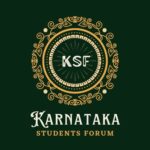Basic biology, life sciences, biotechnology and allied area: Unit 01
Biomolecules
|
| Structure and functions; biological membranes, structure, action potential and transport processes; enzymes-classification, kinetics, and mechanism of action; basic concepts and designs of metabolism (carbohydrates, lipids, amino acids and nucleic acids) |
| Photosynthesis, respiration, and electron transport chain; bioenergetics |
Basic biology, life sciences, biotechnology and allied area: Unit 02
Viruses
|
| Structure and classification; microbial classification and diversity (bacterial, algal, and fungal); methods in microbiology; microbial growth and nutrition; aerobic and anaerobic respiration; nitrogen fixation |
| Microbial diseases and host-pathogen interaction |
Basic biology, life sciences, biotechnology and allied area: Unit 03
Prokaryotic and eukaryotic cell structure
|
| Cell cycle and cell growth control; cell-cell communication, cell signaling and signal transduction |
Basic biology, life sciences, biotechnology and allied area: Unit 04
Molecular structure of genes and chromosomes
|
| Mutations and mutagenesis; nucleic acid replication, transcription, translation, and their regulatory mechanisms in prokaryotes and eukaryotes; Mendelian inheritance; gene interaction; complementation; linkage, recombination and chromosome mapping |
| Extra chromosomal inheritance; microbial genetics (plasmids, transformation, transduction, conjugation); horizontal gene transfer and transposable elements; RNA interference; DNA damage and repair; chromosomal variation |
| Molecular basis of genetic diseases |
Basic biology, life sciences, biotechnology and allied area: Unit 05
Principles of microscopy
|
| Light, electron, fluorescent and confocal; centrifugation-high speed and ultra; principles of spectroscopy-UV, visible, CD, IR, FTIR, Raman, MS, NMR; principles of chromatography-ion exchange, gel filtration, hydrophobic interaction, affinity |
| Principles of chromatography-GC,HPLC, FPLC; electrophoresis; microarray |
Basic biology, life sciences, biotechnology and allied area: Unit 06
History of immunology
|
| Innate, humoral and cell mediated immunity; antigen; antibody structure and function; molecular basis of antibody diversity; synthesis of antibody and secretion; antigen-antibody reaction; complement; primary and secondary lymphoid organ |
| B and T cells and macrophages; major histocompatibility complex (MHC); antigen processing and presentation; polyclonal and monoclonal antibody; regulation of immune response; immune tolerance; hypersensitivity; autoimmunity; graft versus host reaction |
Basic biology, life sciences, biotechnology and allied area: Unit 07
Major bioinformatics resources and search tools
|
| Sequence and structure databases; sequence analysis (biomolecular sequence file formats, scoring matrices, sequence alignment, phylogeny); data mining and analytical tools for genomic and proteomic studies |
| Molecular dynamics and simulations (basic concepts including force fields, protein-protein, protein-nucleic acid, protein-ligand interaction) |
Basic biology, life sciences, biotechnology and allied area: Unit 08
Restriction and modification enzymes
|
| Vectors; plasmid, bacteriophage and other viral vectors, cosmids, Ti plasmid, yeast artificial chromosome; mammalian and plant expression vectors; cDNA and genomic DNA library; gene isolation, cloning and expression; transposons and gene targeting |
| DNA labeling; DNA sequencing; polymerase chain reactions; DNA fingerprinting; southern and northern blotting; in-situ hybridization; RAPD, RFLP; site-directed mutagenesis; gene transfer technologies; gene therapy |
Basic biology, life sciences, biotechnology and allied area: Unit 09
Totipotency
|
| Regeneration of plants; plant growth regulators and elicitors; tissue culture and cell suspension culture system: Methodology, kinetics of growth and, nutrient optimization; production of secondary metabolites by plant suspension cultures |
| Hairy root culture; transgenic plants; plant products of industrial importance |
Basic biology, life sciences, biotechnology and allied area: Unit 10
Animal cell culture
|
| Media composition and growth conditions; animal cell and tissue preservation; anchorage and non-anchorage dependent cell culture; kinetics of cell growth; micro and macrocarrier culture; hybridoma technology; stem cell technology; animal cloning |
| Transgenic animals |
Basic biology, life sciences, biotechnology and allied area: Unit 11
Chemical engineering principles applied to biological system
|
| Principle of reactor design, ideal and non-ideal multiphase bioreactors, mass and heat transfer; Rheology of fermentation fluids, aeration and agitation; media formulation and optimization; kinetics of microbial growth |
| Substrate utilization and product formation; sterilization of air and media; batch, fed-batch and continuous processes; various types of microbial and enzyme reactors; instrumentation control and optimization |
| Unit operations in solid-liquid separation and liquid-liquid extraction; process scale-up, economics and feasibility analysis |
Basic biology, life sciences, biotechnology and allied area: Unit 12
Engineering principle of bioprocessing
|
| Upstream production and downstream; bioprocess design and development from lab to industrial scale; microbial, animal and plant cell culture platforms; production of biomass and primary/ secondary metabolites; biofuels, bioplastics, industrial enzymes |
| Antibiotics; large scale production and purification of recombinant proteins; industrial application of chromatographic and membrane based bioseparation methods; immobilization of biocatalysts (enzymes and cells) for bioconversion processes |
| Bioremediation-aerobic and anaerobic processes for stabilization of solid/ liquid wastes |
Basic biology, life sciences, biotechnology and allied area: Unit 13
Tissue culture and its application, micropropagation
|
| Meristem culture and production of virus-free plants |
| Anther and microspore culture |
| Embryo and ovary culture |
| Protoplast isolation |
| Protoplast fusion-somatic hybrids, cybrids |
| Somaclones |
| Synthetic seeds |
| In vitro germplasm conservation |
| Cryopreservation |
| Organelle DNA, satellite-and repetitive DNAs |
| DNA repair |
| Regulation of gene expression |
| Recombinant DNA technology-cloning vectors, restriction enzymes, gene cloning |
| Methods of gene transfer in plants |
| Achievements and recent developments of genetic engineering in agriculture |
| Development of transgenics for biotic and abiotic stress tolerance, bioethics, terminator technology, nanotechnology, DNA fingerprinting, gene silencing |
GAT-B 2022 Exam Pattern
The candidates appearing for the GAT-B entrance examination should check the exam pattern of GAT-B 2022 before starting their preparation. The GAB-B exam pattern 2022 consist of the important factors such as marking scheme, number, mode and medium of exam, duration of the examination, total section and type of questions that will be asked in the entrance test. The question paper of GAT-B 2022 will consist of 100 MCQs and the candidates must attempt at least 60 questions. As per the GAT-B 2022 exam pattern, the students will be awarded three marks for each correct response and one mark will be deducted for each incorrect responses.
GAT-B Exam Pattern 2022
|
Particulars
|
Details
|
|
Mode of exam
|
Online (CBT)
|
|
Time duration
|
3 hours (180 minutes)
|
|
Total Sections
|
2 (A and B)
|
|
Type of questions
|
Multiple choice (MCQs)
|
|
Part A
|
60 compulsory questions
1 marks for each correct answer
Negative marking of ½ marks for each incorrect answer
|
|
Part B
|
60 questions to be attempted out of 100
3 marks for each correct answer
Negative marking of -1 marks for each incorrect answer
|




